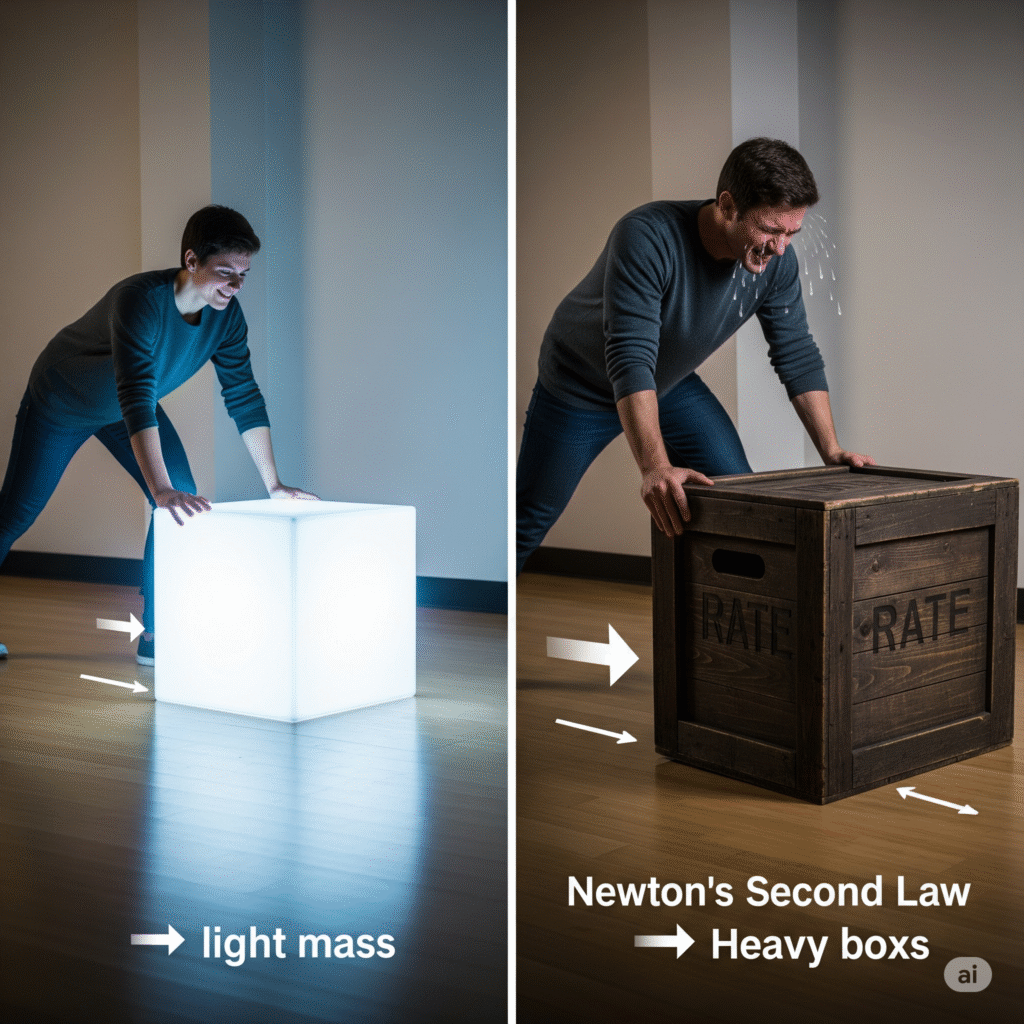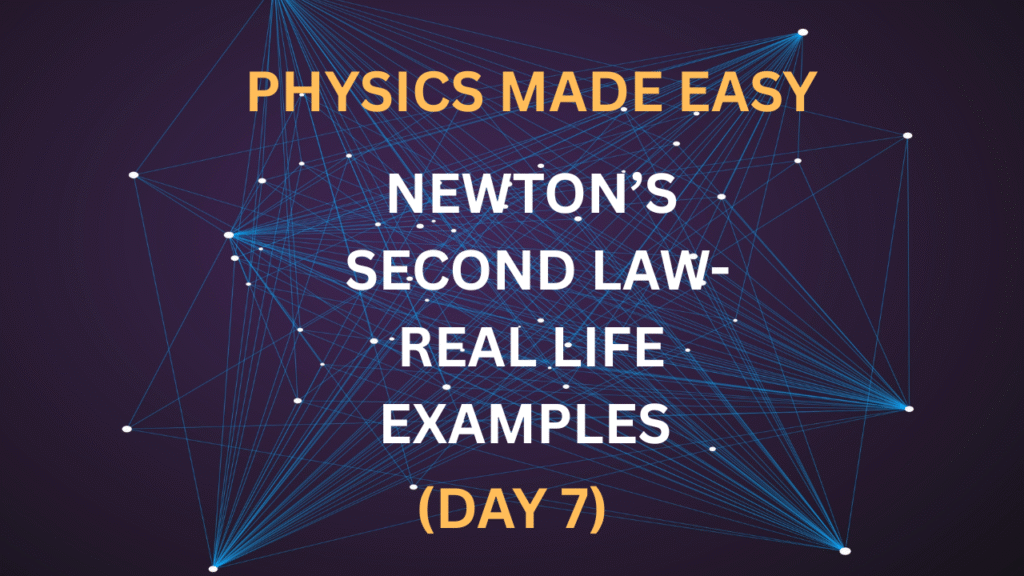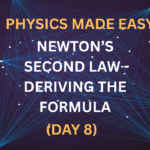Quick Recap & Introduction
Newton’s Second Law of Motion states that:
Force=Mass×Acceleration(F=m×a)
In simple terms, this means that the more massive an object is—or the faster you want it to move—the more force you need to apply. After understanding the basics of Newton’s Second Law of Motion Explained, let’s dive into some real-life Newton’s Second Law examples that clearly demonstrate this law at work every day! Welcome to Day 7 of our Physics Made Easy series.



Real-Life Newton’s Second Law Examples
Here are clear illustrations of how force, mass, and acceleration interact in our daily lives:
- Riding a Bicycle When you pedal harder, you apply more force, and the bicycle speeds up faster—more force (F↑) results in greater acceleration (a↑). And if a heavier person is riding the bike? They need to apply even more force (F↑) to reach the same speed or acceleration (m↑). This is a classic example of Newton’s Second Law in action.
- Pushing a Shopping Cart Pushing an empty shopping cart is easy because it has little mass (m↓). But a fully loaded cart requires much more force to move (F↑) because increased mass (m↑) means increased force needed to achieve the same acceleration. This is one of the most relatable Newton’s Second Law examples we encounter.
- Sliding a Box Have you ever tried moving boxes across the floor? A light box slides easily with a small push. A heavy box is much tougher — you have to exert significantly more force to overcome its larger mass and get it to accelerate.This simple demonstration is a perfect Newton’s Second Law example.
- Hitting a Cricket Ball When a batter swings the bat faster and harder, they apply greater force, causing the ball to travel a greater distance with high acceleration. Plus, a heavier bat (more mass) can transfer more force to the ball (F↑), sending it even further for the same swing speed.
- Skydiver & Parachute Before a parachute opens, gravity applies a constant downward force, pulling a skydiver down rapidly (high acceleration). Once the parachute is deployed, air resistance provides a significant upward force. This drastically reduces the net downward force, which in turn reduces the skydiver’s acceleration, allowing for a safe landing. This is a classic example of changing forces affecting acceleration learn more about the physics of skydiving.
- Sledding Down a Hill A heavier sledder accelerates faster downhill than a lighter one (assuming the same sled and hill conditions). Why? Because gravity applies a greater force to the sledder with greater mass (m↑, so F↑). That increased force results in quicker acceleration, a perfect example of Newton’s Second Law at play.
- Roller Coasters Ever wondered why roller coasters pick up so much speed? Steep drops allow gravity to exert a large downward force, creating rapid acceleration. Plus, the heavier the coaster and its passengers, the greater the gravitational force pulling them downwards, contributing to impressive accelerations explore the physics behind roller coasters.These are some of the most thrilling Newton’s Second Law examples you’ll ever experience
- Dragging Luggage Dragging an empty suitcase is simple; a small force gives it good acceleration. Fill it up with clothes and souvenirs, and suddenly, you need much more force to get it moving with the same acceleration. Again, more mass requires more force (F↑) to get the same acceleration (a). .
Summary
Newton’s Second Law Examples are all around us, illustrating how fundamentally this law shapes the world:
- More mass = more force needed to achieve a certain acceleration.
- More force = more acceleration (for a given mass).
Whether you’re cycling, shopping, or sledding downhill, this law governs nearly every motion you make. By recognizing these everyday Newton’s Second Law examples, you can appreciate just how central this law is to our lives.
Ready to Test It Yourself?
Next time you kick a ball, push a chair, or ride a bicycle, remember that Newton’s Second Law is always in action. Let us know in the comments where you see these Newton’s Second Law examples at work — we’d love to hear your observations!
Stay curious. Stay scientific.



